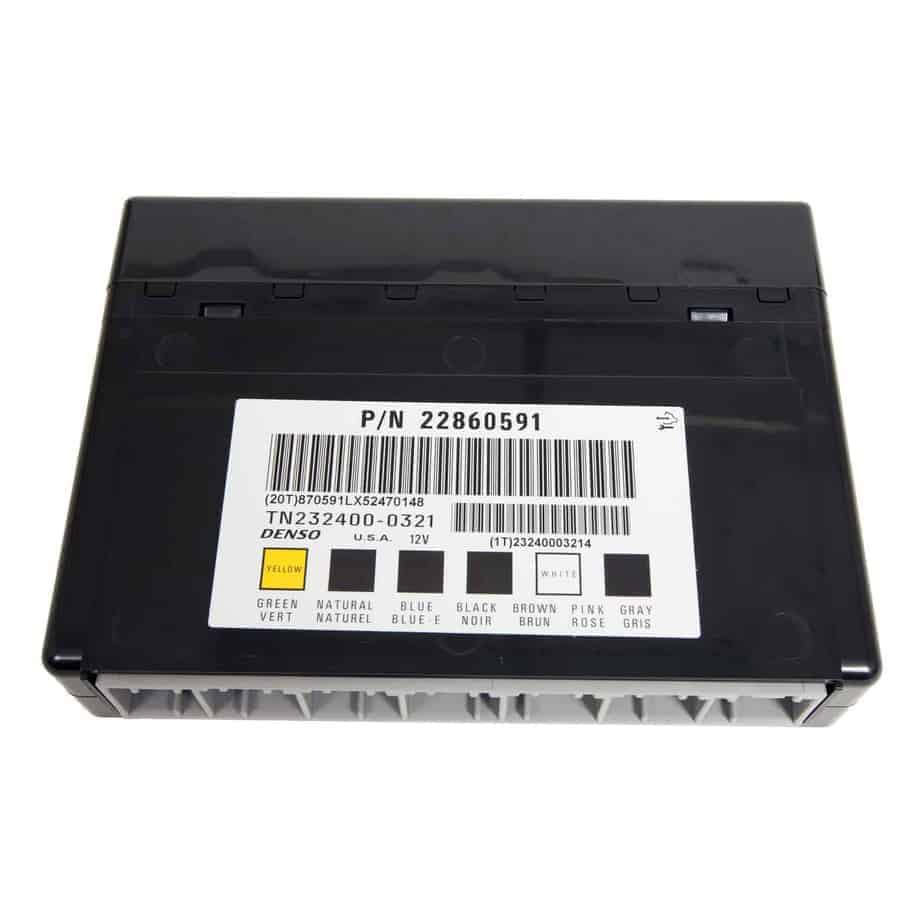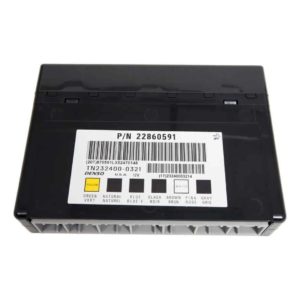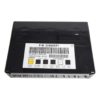Restore Full Functionality to Your Cadillac DTS
Is your 2006–2011 Cadillac DTS suffering from bizarre electrical problems? Intermittent power windows, flickering interior lights, a malfunctioning security system, or even a no-start condition can often be traced back to a single component: the Body Control Module (BCM). As the central hub for your vehicle’s comfort and convenience features, a failing BCM can turn your luxury ride into a source of daily frustration. I’ve seen it countless times in my 20+ years of diagnostics—what seems like a dozen separate issues is actually one faulty module.
This isn’t just a replacement part; it’s a complete, ready-to-install solution. We eliminate the most difficult step of the repair process. Simply provide us with your vehicle’s VIN during checkout, and our technicians will program this 2006–2011 DTS Body Control Module with the latest, most stable software directly from GM. This ensures perfect communication with your car’s other systems, restoring the seamless performance you expect from a Cadillac.
A Technician’s Notebook: The Case of the Ghostly Gremlins
A customer brought in his 2009 DTS, convinced it was possessed. The radio would change stations on its own, the driver’s side window wouldn’t go down, and the alarm would randomly trigger in his driveway. He’d already replaced the battery and checked the window switch. After hooking up the scan tool, I saw a slew of communication error codes pointing to the BCM. The location of the BCM in the DTS (behind the right side of the dash) can sometimes expose it to moisture if there’s a minor windshield seal leak. Sure enough, we found faint corrosion on one of the connectors. A new, properly programmed BCM solved every single one of his “ghostly” problems in one shot. It’s a classic failure mode for these vehicles.
Is Your Cadillac Showing These Symptoms?
- ✔ Erratic or non-working power windows, door locks, and mirrors.
- ✔ Interior or exterior lights staying on or not turning on at all.
- ✔ The security system or keyless entry failing to operate correctly.
- ✔ False warnings on the instrument cluster (e.g., “Service Theft System”).
- ✔ Unexplained battery drain that leaves you with a dead battery.
- ✔ A complete no-start condition where the engine doesn’t even crank.
Your Straightforward Installation Guide
Replacing the BCM is a manageable job for a DIY enthusiast. While we handle the complex programming, you can handle the physical swap. Always consult a vehicle-specific repair manual for detailed diagrams.
- Safety First: Disconnect the negative terminal from your vehicle’s battery and wait at least 10 minutes to allow all systems to power down completely.
- Locate the BCM: On the 2006-2011 Cadillac DTS, the BCM is typically located behind the right side of the dashboard, often accessible by removing the glove box assembly.
- Disconnect and Remove: Carefully unplug the electrical connectors from the old BCM. They have locking tabs that need to be depressed. Once disconnected, unbolt or unclip the old module from its mounting bracket.
- Install the New Module: Mount your new, pre-programmed BCM in the same location. Securely reconnect all electrical connectors, ensuring they click into place.
- Critical Post-Installation Procedures: Reconnect the battery. You will need a professional-grade scan tool to perform two final steps. First, perform the ‘Setup SDM Primary Key in BCM’ procedure to clear any airbag warning lights. Second, some vehicles may require a ‘Brake Pedal Position Sensor Calibration’ to ensure proper brake light and stability control function.
Verified Vehicle Compatibility
This BCM is a direct-fit, programmed solution for a wide range of GM vehicles. Please verify your part number or vehicle model in the list below. This module replaces part numbers: 10382479, 15093910, 15276271, 15299986, 15819552, 15828601, 15837419, 15872388, 15872421, 15880684, 15921352, 15921353, 15948438, 15948439, 20815898, 20839063, 20864767, 20864768, 20921435, 20921436, 20935349, 22860591, 25826124, 25826125, 25847588, 25847589, 25892622, 25910474, 25934762, 25934763, and 95151084.
Fits models including, but not limited to:
- Cadillac DTS (2006-2011)
- Buick Lucerne (2006-2011), Enclave (2008-2012)
- Chevrolet Impala (2006-2013), Monte Carlo (2006-2007), Equinox (2007-2009), Traverse (2009-2012), Tahoe (2010), Suburban (2010), Avalanche (2010), Captiva Sport (2012), Caprice (2011-2013)
- GMC Acadia (2007-2012), Yukon / Yukon XL (2010)
- Cadillac Escalade / ESV / EXT (2010), CTS (2008-2013), SRX (2007-2009), STS (2010)
- Pontiac G8 (2008-2009), Torrent (2007-2009)
- Saturn Outlook (2007-2010), Vue (2008-2010)
- Hummer H2 (2008-2009)
- Chevy Express & GMC Savana Vans (Various years, see list)
Frequently Asked Questions
Why do you need my VIN to program the BCM?
Your Vehicle Identification Number (VIN) allows us to access the exact factory software and configuration files for your specific vehicle. This includes options like sunroof, specific lighting packages, and security systems. Programming with the VIN ensures all features work correctly right out of the box.
Is any additional programming required after I install it?
No, the main programming is done by us before shipping. However, after installation, you will need a scan tool to perform a security relearn procedure, set up the SDM (airbag) key, and potentially recalibrate the brake pedal position sensor. These are simple procedures for any competent mechanic or advanced DIYer with the right tool.
What is a Body Control Module (BCM)?
The BCM is a computer in your car that acts as the central command for all body-related electronic functions. It controls things that aren’t related to the engine, like power windows, door locks, interior lights, wipers, the alarm system, and the instrument cluster display.
Can I install this myself?
Yes, if you are comfortable with basic automotive repairs like disconnecting a battery and removing interior trim panels, you can physically install this module. The key is having access to a bi-directional scan tool for the final setup procedures, or having a local shop perform them for you after you’ve installed the part.


